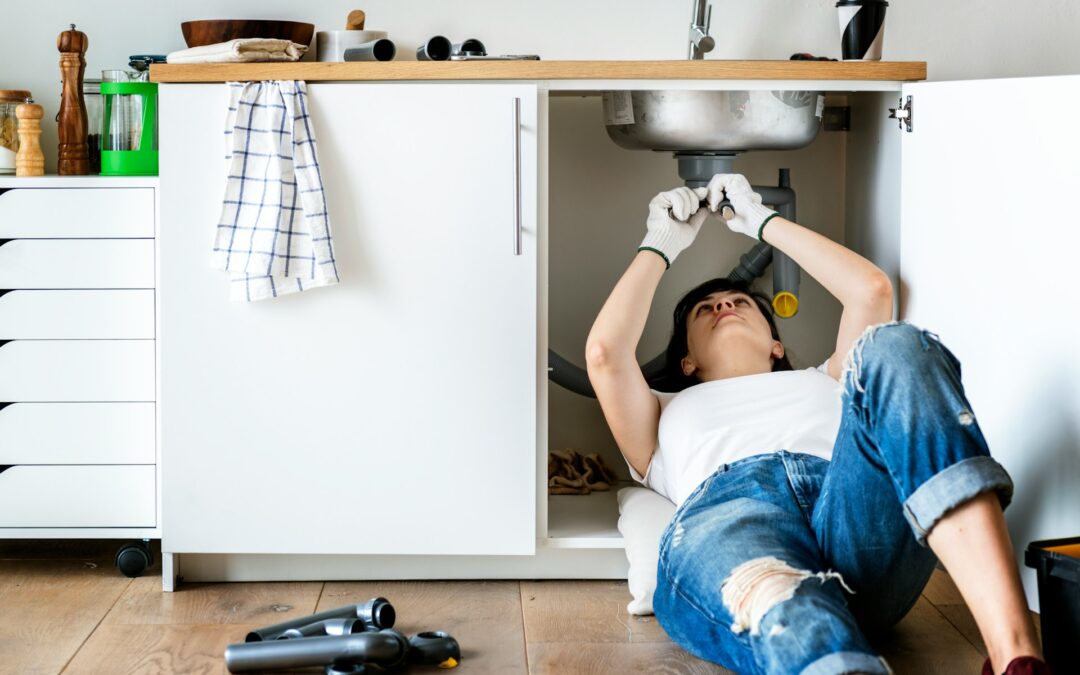Garburators, also known as garbage disposals, are a convenient addition to many kitchens, helping dispose of food waste with ease. When working smoothly, they make clean-up fast and simple. But when a garburator jams, it can quickly turn into a frustrating ordeal. Understanding why these jams occur is the first step in keeping them functional and reliable. For Ottawa homeowners, having a well-maintained garburator also means you’re doing your part to maintain an eco-friendly waste disposal method, which aligns with the city’s sustainability goals.
Keeping your garburator in top shape is not just about preventing food scraps from piling up in the sink. It’s also about avoiding plumbing issues that can arise from repeated jams. When your garburator stops working, it could lead to sink backups and even unpleasant odours permeating your kitchen. By learning how to manage and fix garburator jams effectively, you can maintain a smooth-running kitchen while prolonging the life of your unit.
Common Causes of Garburator Jams
Garburators can jam for various reasons, most of which are related to the types of waste you put down the drain. For instance, fibrous foods like celery or potato peels can wrap around the blades, preventing them from moving. Similarly, starchy foods such as pasta or rice can expand in water, clogging the unit over time. These common mistakes can lead to a situation where the garburator becomes overloaded and stops performing its primary function.
Here are some common causes of garburator jams:
– Fibrous Foods: Items like onion skins, asparagus, and celery can wrap around the blades.
– Starchy Foods: Foods that swell with water, such as rice and pasta, create blockages.
– Non-food Items: Small utensils or other non-food items accidentally dropped can jam the garburator.
– Grease and Fat: Pouring oils down the drain can solidify and cause clogs.
By simply being mindful of what goes into the garburator, many of these issues can be avoided. Sometimes, the way food waste is processed before tossing it into the garburator makes a big difference. For instance, cutting larger scraps into smaller pieces can help the blades process waste more efficiently, reducing the chance of a jam.
Practical Solutions for Fixing Garburator Jams
When you’re faced with a jammed garburator, it’s important to know the correct steps to safely address the problem. Attempting to fix it without proper guidance can lead to further damage, but following a step-by-step approach can help restore its functionality.
1. Turn Off the Power: Before starting, ensure the power supply to the garburator is turned off to avoid accidents.
2. Identify the Jam: Use a flashlight to look down the drain and identify visible obstructions. Avoid using hands directly; a wooden spoon or plunger can safely dislodge items.
3. Manually Free the Blades: Some models come with a wrench socket at the bottom for manual turning. Using the provided tool can help move jammed blades.
4. Flush with Cold Water: Once you’ve cleared the obstruction, run cold water through the garburator to help wash away smaller debris.
Following these steps can often solve the problem without the need for more invasive measures. Yet, it’s important to remember that persistent issues may require professional plumbing assistance to ensure there’s no damage beyond a simple jam. Prevention is always easier than dealing with frequent jams, so adopting mindful usage habits will save time and hassle in the long run.
When to Seek Professional Help
Attempting to resolve garburator issues on your own can be effective, but there are moments when professional help becomes necessary. You might notice signs that indicate a deeper problem, such as persistent clogs that don’t resolve with basic troubleshooting or a garburator that frequently trips its reset button. Unusual noises, like grinding or rattling that don’t match the typical hum of operation, can also signal trouble. Sometimes a garburator may not turn on after a jam even after resetting it, suggesting an electrical issue or a more complex mechanical problem.
Choosing professional plumbing services in Ottawa can be beneficial for several reasons. Professionals have the experience to diagnose issues that aren’t immediately apparent, ensuring your garburator is returned to perfect working condition. They can identify whether the issue lies within the garburator itself or if there’s a more extensive plumbing problem contributing to the malfunction. Letting experts handle repairs also helps prevent accidental damage that can occur from misguided DIY efforts.
Expert intervention guarantees that repairs are handled properly, often providing a more long-term solution than temporary fixes achieved at home. They can also offer valuable advice on maintenance practices tailored to your specific model and usage patterns, helping you avoid future jams and prolonging the lifespan of your garburator equipment.
Maintenance Tips for a Healthy Garburator
Regular maintenance is key to preventing garburator problems and ensuring it remains in tip-top shape. Adopting a few simple habits can make a substantial difference. One of the easiest routines is to run cold water through the garburator before, during, and after use. This keeps the unit from overheating and helps move waste efficiently through the pipes. It’s also advisable to occasionally add a few ice cubes into the garburator. The ice sharpens blades and helps dislodge minor debris stuck inside.
Consider implementing a weekly cleaning routine to remove built-up grime or trapped food residues. Cut a lemon into small wedges and toss a few pieces in while running cold water. The citric acid acts as a natural cleaner, leaving your kitchen smelling fresh. While pouring boiling water followed by dish soap may seem like a good idea, it can actually harm the garburator by melting fats that later solidify. Instead, a mixture of baking soda followed by vinegar offers an eco-friendly and safe cleaning solution.
Adhering to these maintenance practices keeps your garburator running smoothly and prevents unexpected hiccups that could disrupt your daily routine. Keeping this regimen also means you can enjoy the convenience of efficient waste management, contributing to hassle-free kitchen operations.
Keeping Your Garburator Working Efficiently
A properly maintained garburator is more than just a tool for convenient waste disposal; it’s an integral part of a smoothly running household. By focusing on proper use and regular maintenance, you’re investing in the long-term reliability of your kitchen equipment. Building good habits when using your garburator, like ensuring you’re only disposing of suitable food waste, can go a long way in avoiding problems.
Looking after your garburator doesn’t require specialized knowledge or significant time commitments. It’s about being consistent with the little things, like checking the items you dispose of and routine clean-ups. Over time, these efforts accumulate into significant benefits, saving you from costly overhauls and emergency plumbing calls.
Incorporating these straightforward practices not only enhances the efficiency of your garburator but also contributes to an easier, stress-free home maintenance routine. Keeping your garburator in good shape also means you can focus on enjoying your time in the kitchen rather than dealing with mechanical annoyances, leaving you free to tackle the more enjoyable aspects of home life.
Keeping your garburator in prime condition can dramatically improve your kitchen routine and avoid unnecessary inconveniences. When home fixes don’t seem to do the trick, you might need more targeted support. Experienced help can save you from future headaches and ensure everything runs smoothly. So, if you’re dealing with persistent jams or suspect more complicated issues, consider a more thorough plumbing repair in Ottawa with Pipes Plumbing. Let us handle the complexities while you enjoy peace of mind and a hassle-free kitchen.

